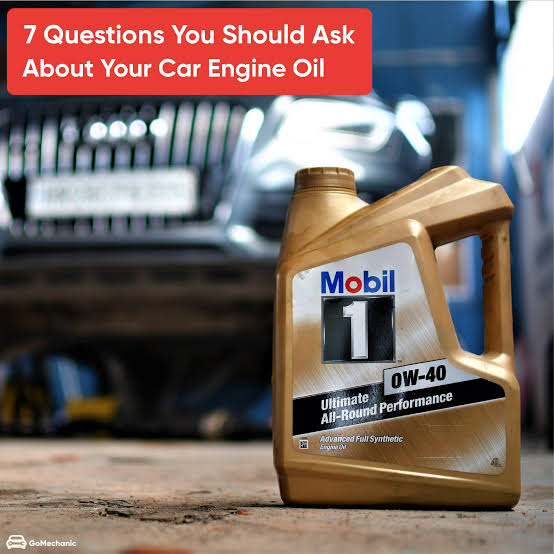
There are many types of engine oil in the market that are used for different purposes. In order to choose the right type for you, you need to understand a set of things, instructions that help you on how to choose engine oil, and they evaluate viscosity, classification symbols.
Every engine needs to choose a high quality oil to improve the engine’s performance level.
Each type of oil differs from the other with different additives, which is what distinguishes each type of oil.
The level of viscosity and classification service may vary completely, depending on the condition of the engine oil. Here are a set of tips for how to choose engine oil?
How to choose engine oil?
Oil additives: To keep the engine oil cool, clean, corrosion free, refined, and more various additives that can include up to 25% of the oil content.
Viscosity Classifications: Viscosity determines the ability of an oil to flow.
There are two types of engine oil, which are mono-viscosity oil and multi-viscosity oil. Most cars are often designed to be run with a multi-viscosity oil that has a low number and is thinner in order to facilitate its flow. For example, oil with a number 10W-40 means that it is a multi-viscosity oil. 40 indicates how oil flows at high temperatures.
In order to know which viscosity level is suitable to choose, you can read the owner’s manual for the engine and get acquainted with the viscosity chart.
Oil classification codes: When you see the star symbol on the engine oil container, it means that the engine oil meets the requirements of engine protection standards and fuel economy, according to the report of the American and Japanese car manufacturers.
Engine oil types:
When you look at the shelves of auto parts stores, you will see many types of oils that are used for specific purposes:
Whether it is for new cars, high-tech engines, high mileage vehicles, SUVs and in addition, you will see a wide range of viscosity levels. If you read your own car owner’s manual, you’ll find out what the car manufacturer recommends and new brands. The guide indicates the steps you need to have a better fuel economy, and now let’s take a look at the different types of oils:
Synthetic oil: Some say that industrial oils allow it to last longer without changing the oil, and it leads to less rebound in engine parts and helps the engine to work during high temperatures. Synthetic oil is specially formulated for high-tech engines.
This oil goes through a series of rigorous tests in order to achieve long-term performance because the viscosity index provides the right to protect the deposits in the engine. Synthetic oils achieve better flow at low or high temperatures and keep the engine lubricated for a longer period even after intensive use, but it is also more expensive than conventional oil and does not necessarily fit every engine.
Conventional oil: You will find standard and conventional oil in the market at reasonable and available prices, and these options are adhered to by the American Automobile Maintenance Institute. Conventional oil is ideal for owners of good cars.
High-quality conventional oil: The standard oil is suitable for all new cars and all leading brands with SL service level and is available in different viscosity grades. Usually automakers specify W-20 – 5W-30 . oil
Especially at low temperatures, 10W-30 is suitable for it – especially at high temperatures. The oil guarantees you 4000 miles / 4 months and proper practice and the minimum change of this type is twice a year. And if you have a car with an electronic indicator that appears on the settings panel, this warning must not be matched.
Synthetic oil blend:
This oil is a dose of synthetic oils mixed with organic oil and is formed to provide protection for the engine and high temperatures, which means that they are less volatile so that there is much less evaporation, which reduces oil loss (meaning the economy in fuel consumption). This oil is popular with truck/SUV drivers who want a high degree of protection and a lower cost.
To choose the right engine oil, you should ask yourself the following questions:
What type of oil was used? If your car is running fine, there is no need to change the brand.
What type of oil does your engine manual recommend? If your car is still under warranty. It is preferable to use this oil and not another so as not to void the car warranty.
Do you live in a very cold or very hot climate? Or mountainous regions? Are there sharp changes in the temperature in which you live?
Multi-weight oils include a range of temperatures and the number should preferably be accompanied by a W symbol if the oil is operating in cold weather.
How old is your car? If you have an older car, you may find that it runs on mono-viscosity oil most of the time.
And if you change to a multi-viscosity oil suddenly, it leads to problems in the engine.
What is the condition of the car engine?
If your car has been recording high mileage over several years, the car may run on 30-40 mono-viscosity oil. This is because the multi-viscosity oil is not thick enough to soften spent engine parts. And to keep the oil thick enough to fill in the gaps if it’s run with oil 30 and change to oil 40 during the summer, when the oil is thin.
Additives to oils:
Using additives to oils is one way to improve and maintain oil performance. Especially since the temperature determines a group of things: moisture, combustion, rust, corrosion, and here is a group of substances added to oils:
Viscosity improvers index: leads to a thin oil with high temperatures.
Detergents: In order for the oil to clean and remove deposits and solids, but its main purpose is to obtain a clean engine surface by discouraging the formation of deposits at high temperatures, rust and corrosion.
Dispersants: they break up the solid particles and keep them in the form of a solution so that no sediment is formed.
When acids and some substances are added, they act as detergents.
Friction rates: reduce engine friction, so they save fuel consumption. Graphite, molybdenum and other compounds are used.
Antioxidants: engine temperatures, which reduce emissions and the need for antioxidants to prevent oxidation and thus oil thickness. Some additives of antioxidants prevent corrosion
Foam retardants: Oil foam is not effective as a lubricant so retardants are used for bubbles that occur.
Rust inhibitors: protect the metal parts from acids and moisture.
You should note that additives to the oil do not necessarily improve the oil.
In fact, they can make things worse, for example sulfur compounds have anti-wear and antioxidant properties, but they can reduce fuel consumption and affect the catalytic process.
Detergents may affect the equilibrium and dispersants may affect the performance of the catalyst.








